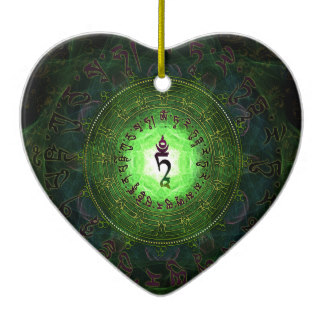Tara can manifest in myriad—literally endless—forms, suited to the need of the practitioner. Iconographically, She can appear in any color. Famously, She is Green Tara, the saviors—and the chief manifestation of Tara. She is equally known as White Tara, the Goddess of Long Life and Healing.
She can be Ugra Tara, the Black Tara, who is the secret Mantra emanation—the very source of All, since sound (or frequencies) are often considered the source of manifestation in some Budhdist and Hindu beliefs.
Red Tara enjoys much love for her passionate role as the magnetizing Tara, who attracts and who helps beings with the power of positive attraction.
Yellow Tara helps those struggling with poverty, or just to help provide the resources to help other sentient beings. In higher Tantric practices Tara can manifest in the body mandala as simultaneous multi-coloured Taras at each of the body’s chakras.
Although all Buddhas and enlightened beings have the same realizations, the first question from people newly introduced to Tara, or any deity, is often “What does She do?”
What does Tara do? “Does” is a relative term. Relatively, She is wisdom in action. She is compassion in action. Tara is the penultimate combination of both wisdom and compassion. Ultimately, She is Wisdom realizing emptiness. Relatively, She is the ultimate action hero—means and method. Her names include “Swift Heroine,” which describes Her perfectly.
With Tara, Wisdom and Compassion are perfectly combined.
She is swift like the wind. Her green color is representative of the swift, active wind element, fearlessness, and imperturbable wisdom—very much a reflection of Her male consort, Amoghasiddhi. Also, without contradiction, often Tara is seen as the consort of other male Buddhas. She can also be thought of as the female aspect of Avalokitesvara (Chenrezig).
Tara – The Female Buddha
Tara is actually the perfection of wisdom, and she is the mother of all the Buddhas, Bodhisattvas, Shravakas, and Pratyeka Buddhas. This wisdom is actually beyond any forms or signs or descriptions. But out of great compassion, in order to help sentient beings, she appears in a physical form that is the Tara. The word Tara means “Saviour” or “One Who Saves”.
Why Tara is called as the female Buddha?
There are male and female Buddhas just as there are male and female people. There are many female Buddhas, not just Tara and Vajrayogini; there are so many female deities! For some people, it is much easier to practice female deities.
It depends on one’s own karmic connections. For some, female deities are more suited, and for others, male deities are more suited. Although is it said, in terms of their wisdom, compassion, and power, that all deities are the same, but due to their motherly figure, it is easier to invoke the blessing of female deities.
Why is Tara in particularly regarded for her compassion?
Basically, all the deities are the nature of compassion and emptiness, but Tara is special in two ways: firstly, she is in the motherly figure, and secondly, she is an emanation of Avalokiteshvara, the manifestation of all the Buddhas’ compassion. Therefore, there is a particular connection between compassion and Tara.
For (Donations for our Buddhist research and development)
Do you earnestly cherish our devoted work? Assuming this is the case, we are delighted that you are finding our blog useful and valuable. Would you consider making a donation for our Buddhist research and development?
We need your help to secure the future of scholarly interaction with Buddhism. Since our very first publication of Dharma works and activities in the year 2008, we had been effortlessly providing free distribution of Dharma posts and articles throughout the previous 13 years. We have exceptionally constrained supports and do not receive subsidized or funding from people in general.
Please help us and to develop our Dharma activities that will not only benefit you, but to all Dharma readers on the planet. Please consider showing your support. Your generosity will certainly help us to enhance our work and to accomplish for a better and brighter prospect to come.
Thank you for reading, may you find peace and great bliss. With your support it helps to spread the Buddha’s precious teachings and turning the Dharma wheels in the world.
Aspiration For Bodhichitta
For those in whom the precious Bodhichitta has not arisen
May it arise and not decrease
But increase further and further.
Dedication of Merit
By this merit may we obtain omniscience then.
Having defeated the enemies wrong-doings.
May we liberate migratory from the ocean of existence.
With its stormy waves of birth, old age, sickness and death.
*Note
I do not own or infringe any copyright of the picture(s).
Picture(s) courtesy and credit to the rightful distributors and or studios.
Picture(s) is/are intended for editorial use only.
























.jpg)







